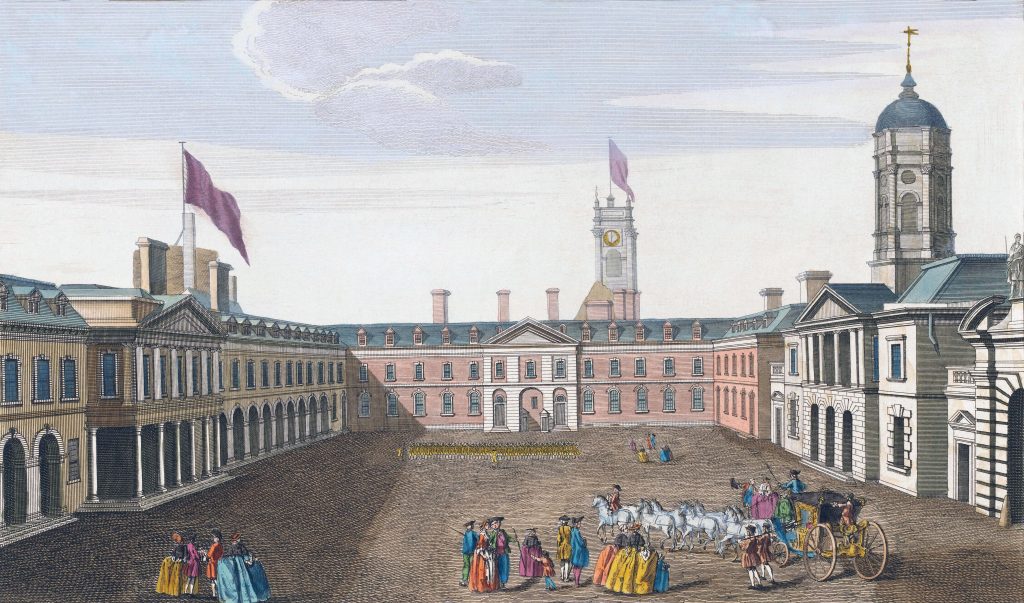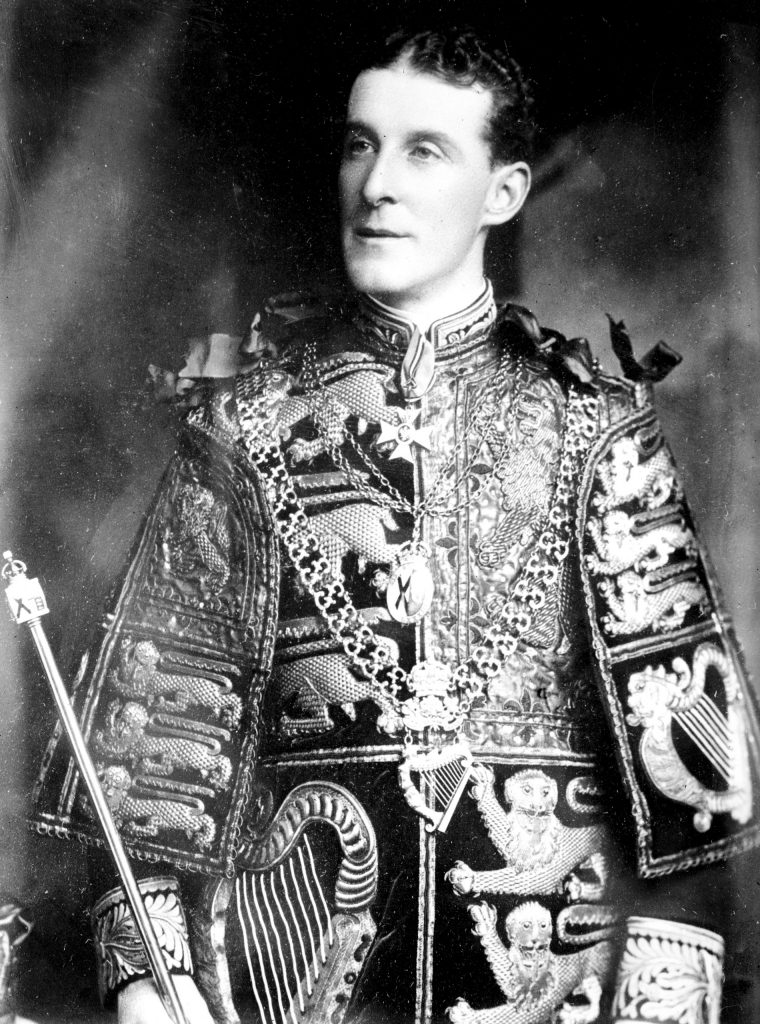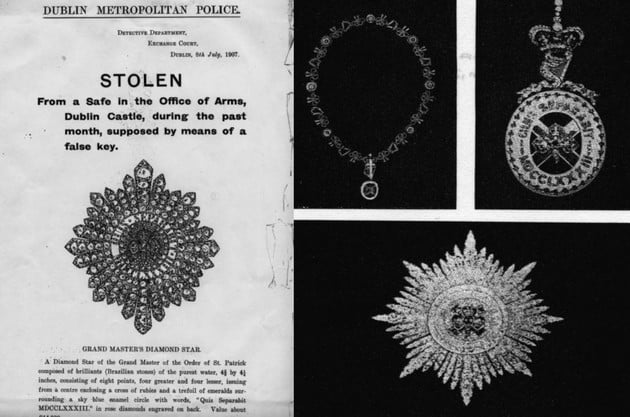Archaeology & History
The Hunt: The Stunning Heist of Ireland’s Crown Jewels
The tale features royal jewels, bumbling aristocrats, and no less than Sir Arthur Conan Doyle.

The Hunt explores art and ancient relics that are—alas!—lost to time. From the Ark of the Covenant to Cleopatra’s tomb, these legendary treasures have long captured the imaginations of historians and archaeologists, even if they remain buried under layers of sand, stone, and history.
The Dublin Castle heist of 1907 has it all: royal jewels, bumbling aristocrats, the occult, and for dramatic effect, the involvement of Sir Arthur Conan Doyle.
Picture the scene. Four days before King Edward VII is due to visit the Irish International Exhibition, a world’s fair, the Irish Crown Jewels are declared missing. The king is most displeased.
To be clear, the jewels were purely ceremonial—the king has his own. They were gifted in 1830 by William IV to the Most Illustrious Order of St. Patrick, Ireland’s landowning pro-union elite. Seventy-five years on, Irish nationalism is surging and the jewels are a delicious, symbolic target.
This symbolism extended to the jewels themselves. The star, badge, and collars were studded with gemstones taken from the collection of William’s mother Queen Charlotte. The star featured peerless Brazilian diamonds and enclosed a shamrock of emeralds and a cross of rubies. The badge followed suit. Today, they would be worth $5.5 million (“royal factor” not included).
Their protection fell to the Ulster King of Arms, Sir Arthur Vicars. He wasn’t good at the job. He renovated Dublin Castle’s Bedford Tower to include a new strong room, but the safe was too big to fit through the door. Instead, the jewels were kept in the library with a guard posted outside. Unfortunately, the library had several doors.
Vicars was also known to lose his keys. Case in point: Lord Haddo once stole the jewels and returned them by post.

A portrait of Sir Arthur Vicars. Photo: HUM Images/Universal Images Group via Getty Images.
Stressed out by the king’s upcoming visit, Vicars ignored the numerous security breaches (misplaced keys, mysteriously opened doors). Big mistake. He’d sent a golden collar to be repaired and when the jeweler returned it, they found the safe empty. Well, not entirely. A ribbon had been carefully unscrewed from the badge. The culprit had been in no hurry.
A reward of £1,000 ($140,000 today) was issued, and when the efforts of Dublin police proved feckless, the Metropolitan Police was called in. It swiftly filed a report. This was rejected and buried. Many believe Scotland Yard uncovered a story too scandalous for either the Irish police or the royal family to handle.

The notice posted by the Dublin Police announcing the theft of the crown jewels. Photo: Dublin Metropolitan Police.
Vicars, desperate to prove his innocence, turned to increasingly unlikely sources. A seance told Vicars the jewels were buried in a graveyard outside Dublin. He dug up two. No luck. His distant cousin Sir Arthur Conan Doyle offered his services, but to no avail.
The potential culprits were many and the motives were infinite. Some Members of Parliament blamed Unionists who were seeking to embarrass Irish nationalists. Others blamed Irish nationalists who were seeking to embarrass Unionists.
Vicars blamed Francis Shackleton, brother of the famous Antarctic explorer Ernest. The Ulster King of Arms had three assistants: Pierce Gun Mahony, his nephew, Francis Bennett-Goldney, and Shackleton. All three had keys. All three have been considered culprits.
Vicars believed Shackleton, a socialite constantly short of money, had stolen the jewels in coordination with Captain Richard Gorges. The two men were lovers and this points to why the lead was never publicly pursued. Homosexuality was illegal at the time and a public trial would have involved shedding light on a group of homosexuals in the highest echelon of British-Irish society.
The jewels have never been found, though some claim they were secretly turned to the royal family. Vicars was dismissed from his post by the king and was killed by the Irish Republican Army in 1921.





